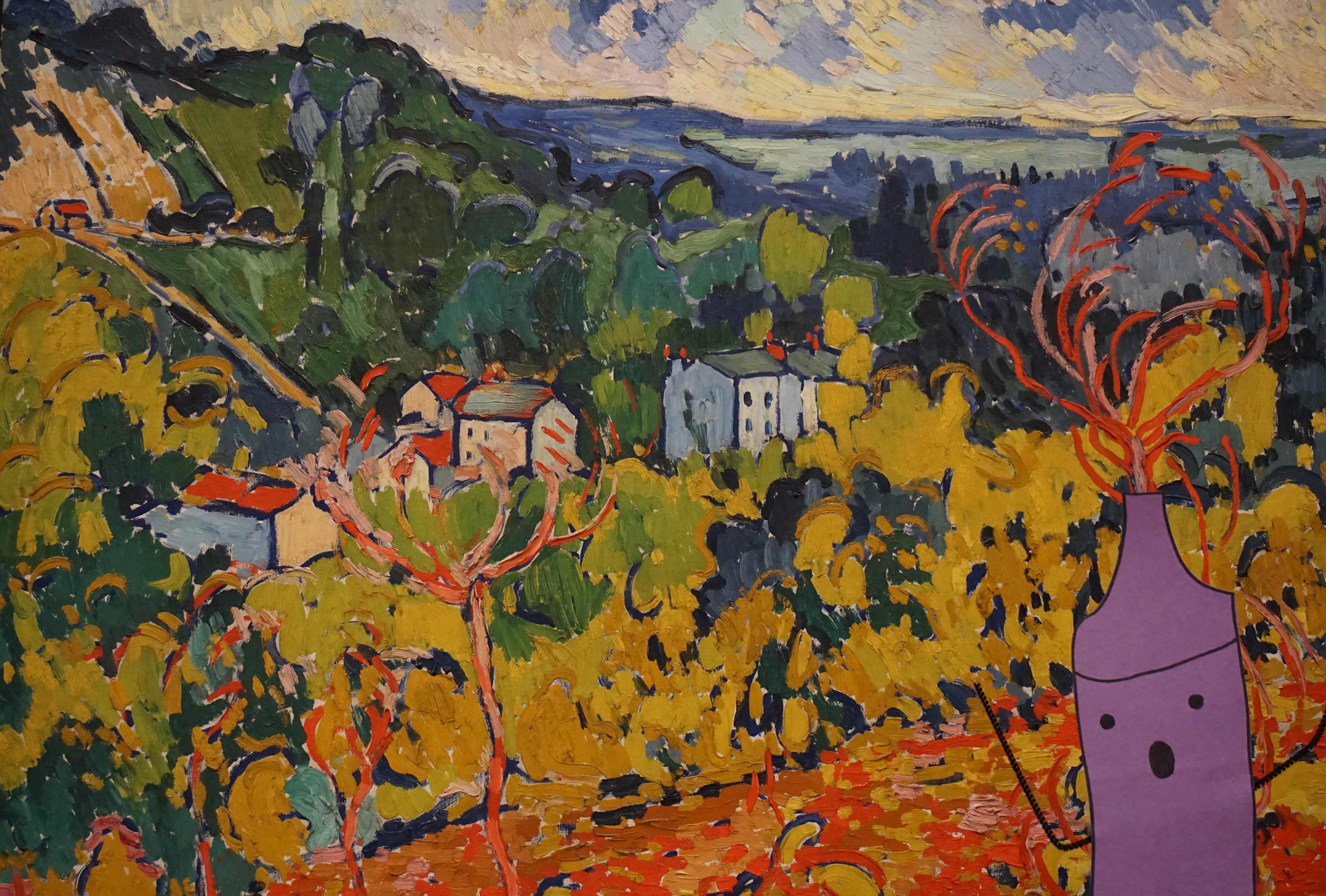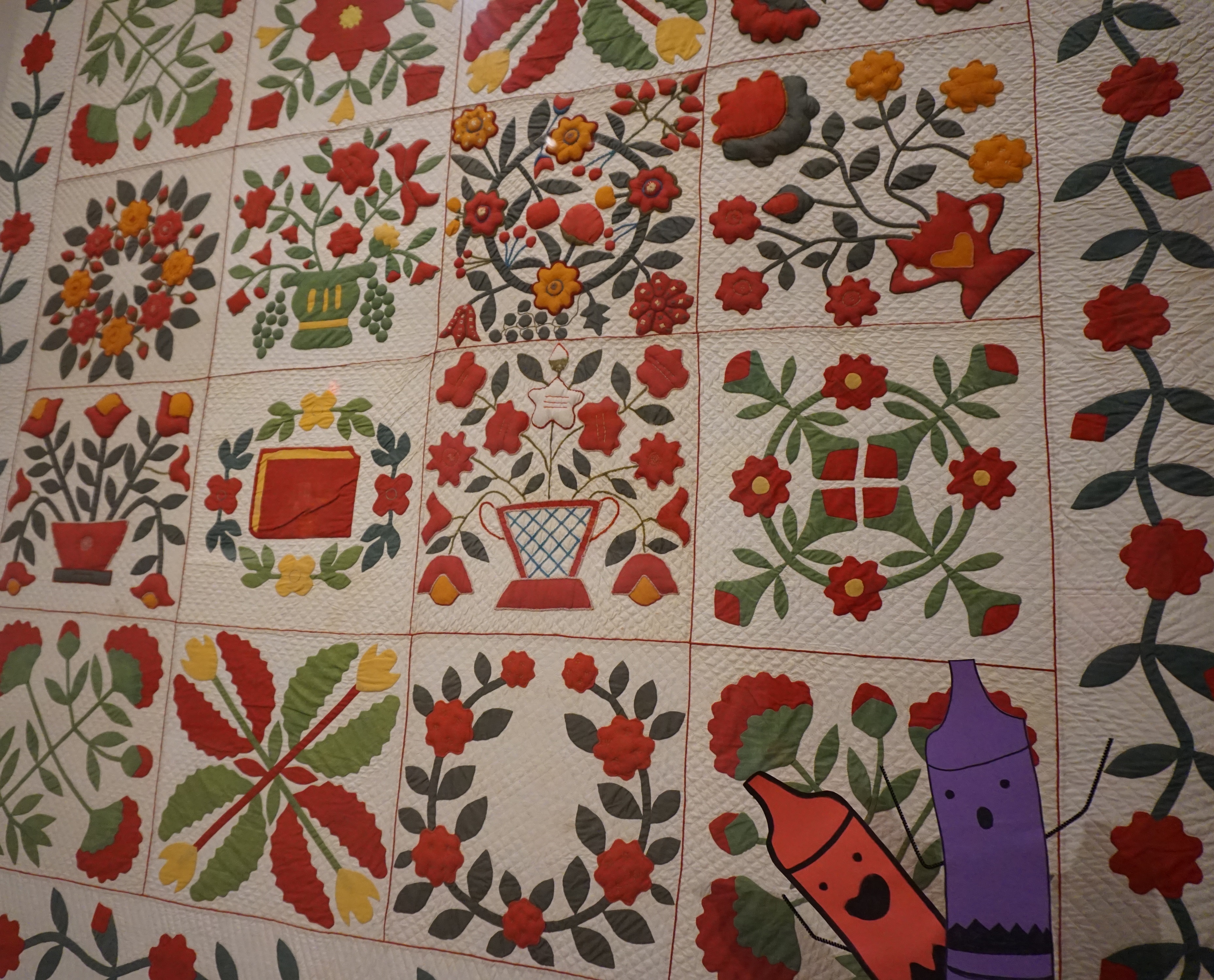Fellow Teaching Programs Intern Ashley Bruckbauer and I, recently led a docent training session that highlighted six objects from the Himalayas and Southeast Asia. We wanted to familiarize docents with objects from these areas, discuss teaching strategies for works with religious significance, as well as consider overarching themes within the Asian collection that would encourage students to make connections within their own lives.
Ashley started the training session talking about the Silk Road Trade Route and how it introduced Buddhism into different regions of Asia. Buddhism originated in India and is based on the teachings of Prince Siddhartha, who became known as the Buddha, or Enlightened One. He taught that all life is suffering, but renouncing desires and the self can lead to a state of enlightenment beyond both suffering and existence. Buddhism is no longer as widely practiced in India but has spread to Southeast Asia, Central Asia, and the Far East through missionary activity. Today, it is one of the world’s largest religions.
We then had docents look at and discuss the six works of art. These objects inspired the two themes for our docent training: Opulent Buddhas and Ferocious Protectors.
1. Opulent Buddhas
The objects presented under this theme were the Buddha Sakyamuni, Manjusri, and the Buddha Muchalinda. These objects represented three examples of Buddha figures heavily adorned with lavish materials. What can we learn from these objects, sculpted in opulent materials? Buddhists consider gold the supreme color, which is why many of their images are gilded. Bronze figures are sometimes coated with another metal before gilding. Gem-encrusted, gilded statues would have been created to inspire meditation among the monks in a Buddhist monastery. It also symbolizes the spiritual wealth of the Buddha.
- The Buddha Sakyamuni is shown standing in his princely clothing. He is wearing a robe or Sanghati, with a jeweled belt, collar and crown. He also has a jeweled inlay urna or third eye, on his forehead as well. His hand gesture, or mudra, symbolizes protection, meaning “fear not.”
- Manjusri is the bodhisattva of divine wisdom. He is considered to be the founder of Buddhist culture. He is always shown as a youthful crowned prince. He carries traditional emblems: the Buddhist scriptures on a lotus flower and the sword that cuts ignorance. His left hand is raised in a gesture of teaching. His sweet and placid character embodies peaceful consolation.
- The Buddha Muchalinda represents a moment in the Buddha’s enlightenment. The Buddha was sitting under a tree in deep meditation, when rising waters were sent by a demon to drown him. The Naga or serpent king, came from beneath the earth, raised the Buddha above the rising waters on his snake coils and protected him with his seven cobra heads.
[slideshow]
2. Ferocious Protectors
The second group of objects discussed were the Guardian Snow Lions, Rearing Lion, and the Dharmapala Lhamo. Ferocious animals and wrathful deities have symbolic significance and are an important decorative element in Buddhist art. Why might it have been necessary for these objects to appear frightening? Fierce sculptures such as these are made to adorn the Buddha’s throne and protect the Buddhist law and scriptures.
- These Guardian Snow Lions are shown heavily ornamented with a jeweled crown and decorative chains as well as elaboration of bodily features, such as the curls in the mane, tail and leg fur. Flames of wisdom, which represent light or transformation, flare up from the shoulders and the head. Their ferocity is shown by their large sharp fangs, powerful claws and brawny build. The lions would have guarded entrances of temples and demarcated sacred grounds. They also protect against evil spirits and are depicted in Buddhist art supporting the Buddha’s throne.
- A figure like the Rearing Lion would have supported the exterior base of temples, lintels, thrones, pedestals or platforms. The details of the face, such as the squared mouth and the treatment of the eyebrows with a relief-design between eyes, are associated with the royal temple of Koh Ker. Koh Ker was the capital of the Khmer Empire during the 10th century. The Khmer Empire is now present-day Cambodia.
- The Dharmapala Lhamo is one of eight Dharmapalas or Great Protectors of the Buddhist law and scriptures. She is typically illustrated as a bloodthirsty and terrifying character riding a mule or donkey and adorned with a crown of skulls, garland of decapitated heads, and a human skin worn as a cape. She also has flaming hair, bulging eyes and a corpse in her mouth. The goddess rides through a sea of blood accompanied by two hybrid female deities. She would be used by monks for meditation, helping to transform anger and energy into creative energy needed to achieve enlightenment.
Karen A. Colbert
Teaching Programs Intern
Buddha Sakyamuni, Khmer Empire (Thailand), 13th century, Dallas Museum of Art, gift of David T. Owsley via the Alvin and Lucy Owsley Foundation, Cecil and Ida Green Acquisition Fund, and Wendover Fund
Manjusri, Nepal or Tibet, 18th century, Dallas Museum of Art, bequest of Mrs. E.R. Brown
Buddha Muchalinda, Khmer Empire (Cambodia), Dallas Museum of Art, Cecil and Ida Green Acquisition Fund
Guardian Snow Lions, Nepal, Kathmandu Valley, 1875, Gift of David T. Owsley via Alvin and Lucy Owsley Foundation
Rearing Lion, Cambodia: Koh Ker period, 10th century, Dallas Museum of Art, Dallas Art Association Purchase, The Museum League Fund
Dharmapala Lhamo, Tibet, 18th century AD, Dallas Museum of Art, gift of David T. Owsley through Alconda-Owsley Foundation




